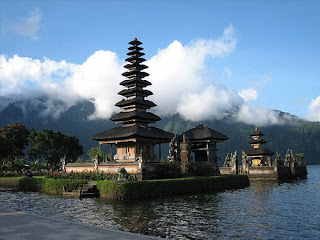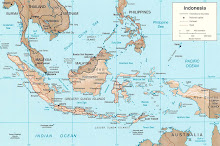The Pura Luhur (literally ‘high temples’ or ‘ascension temples’) Uluwatu is famous not only for its unique position, also boasts one of the oldest temples in Bali. This Uluwatu temple is a Bali's most spectacular temple located high on a cliff top at the edge of a plateau 250 feet above the waves of the Indian Ocean. Dedicated to the spirits of the sea, the famous Uluwatu temple is an architectural wonder in black coral rock, beautifully designed with spectacular views. This is a popular place to enjoy the sunset.

Uluwatu temple is one of Bali's directional temples and it guards Bali from evil spirits from the southwest, God of the elements and of cosmic force majeures, Bhatara Rudra. Empu Kuturan, a Javanese Hindu priest who built the tiered meru, founded the temple in the 10th century and a shrine here as well as at other key locations longs the Balinese coast. In the 15th Century the great pilgrim priest Dhang Hyang Dwijendra, who established the present form of Hindu-Dharma religion, chose Pura Uluwatu as his last earthly abode. According to local records, Dwijendra achieved ‘moksa’ while meditating at Uluwatu. The temple is regarded, by Brahman's island wide, as his holy tomb. Legend also tells us that Dwijendra was the architect of the beautiful temple, as well as many other major temples on Bali, Lombok and Sumbawa. In the 17th century, Niratha, also from Java, came to Bali and built temples, adding to Uluwatu.

Uluwatu temple is located on the cliff top close to the famous surf break on the southwest of the Bukit peninsula. So Uluwatu Beach is also known for its surf and, in nearby hostelries, its full moon rage parties. It rages at the temple too but in an orderly way, thanks to the royal house of Puri Agung Jero Kuta, Denpasar, who are the temple's hereditary pangemong (custodians). Hundreds of nobles from this family, and many 'devotees' (pengayah) and village ‘pemangku’ priests from nearby hamlets, ensure that every seven months the festival is run efficiently, and most elegantly. The palace is proud of its ancestral role. It manages the awesome logistics with fitting dignity.
Being a popular surfing spot for the very experienced, Uluwatu offers a wonderful vantage point to view a spectacular sunset. Small restaurants perched on the cliff offer a comfortable spot to survey the vast Indian Ocean beyond and below the 100-meter-high cliffs with panorama on three sides.
Uluwatu lies in Badung Regency, southern of Bali Island, Republic of Indonesia.
 Bedugul is well-known for the quality of its fruit, vegetables, and flowers. And so it’s also known as a center of horticulture. Bedugul is located in cool damp mountain country, an excellent base for walking trips around the lakes and surrounding hills. In Bedugul visitors could fine 3 of Bali 4 lakes, Bratan, Buyan, and Tamblingan that provide everything from recreation to the water for springs, rivers and rice fields below. Bratan, the largest of the three is perfect place for water sports such as parasailing, motor boating, jet skiing, water skiing, canoeing, etc. Bedugul fertile soil also produced abundance of plants and trees, some of them formed rain forests with their exotic birds, monkeys, and other creatures.
Bedugul is well-known for the quality of its fruit, vegetables, and flowers. And so it’s also known as a center of horticulture. Bedugul is located in cool damp mountain country, an excellent base for walking trips around the lakes and surrounding hills. In Bedugul visitors could fine 3 of Bali 4 lakes, Bratan, Buyan, and Tamblingan that provide everything from recreation to the water for springs, rivers and rice fields below. Bratan, the largest of the three is perfect place for water sports such as parasailing, motor boating, jet skiing, water skiing, canoeing, etc. Bedugul fertile soil also produced abundance of plants and trees, some of them formed rain forests with their exotic birds, monkeys, and other creatures.





